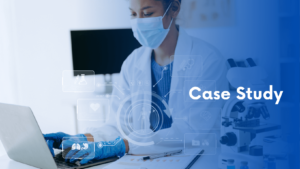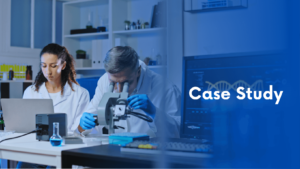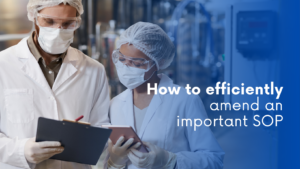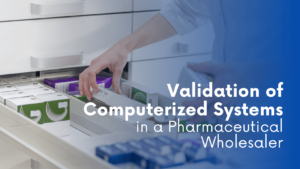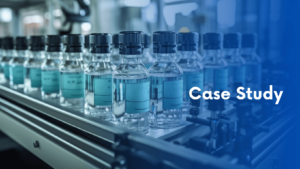Subject
Our client is a global company originating from Norway, specializing in healthcare solutions including clinical nutrition production, life-saving medications, and infusion/transfusion technologies.
Operating within the European market, our client must adhere to EU regulations while also preparing for inspections from international bodies such as the United States Food and Drug Administration (FDA). Their validation processes lacked comprehensive documentation. Therefore, the client sought to enhance their validation procedures to ensure compliance with both EU and FDA regulations.
The company they had been working with solely conducted measurements and acceptance tests, but lacked the expertise to document new, unconventional elements, conduct comprehensive validation, and qualification. Therefore, due to our previously confirmed expertise and attractive service costs compared to Norwegian companies, the client decided to collaborate with us and reached out to us for assistance in improving their quality system.
In 2020, amidst the COVID-19 pandemic, we commenced collaboration with the client. Given the restrictions on travel, our first project was executed remotely, focusing on technical aspects.
Scope of work
A primary challenge we encountered was addressing longstanding gaps in the quality system, which required innovative solutions.
Project 1: Documentation for qualifying the team’s preparation area for infusion solutions
Our initial task involved developing protocols for remote qualification based on submitted documentation. This included:
- Risk Analyses: FRA, SIA, CIA
- Protocol for Performance Qualification (PQ), result development, and qualification report creation.
Project 2: Qualification documentation for clean media systems
We developed qualification documentation for clean media systems, including compressed air and Clean Steam. This encompassed:
- Risk Analyses: FRA, SIA, CIA
- Qualification plan
- Protocols for Design Qualification (DQ), Installation Qualification (IQ), Operational Qualification (OQ), Performance Qualification (PQ).
Project 3: Qualification of production equipment
Qualification documentation was prepared for 10 production devices, namely Mixing Tanks and the iIsolator for measuring product sterility. We are also in the process of qualifying a deionized water purifier for the client.

This area involved:
- Risk Analyses: FRA, SIA, CIA
- Qualification plan
- Protocols for DQ, IQ, OQ, PQ.
Project 4: Clean room and HVAC installation qualification
This project centered on upgrading aged ventilation units to meet modern cleanroom standards.
The old ventilation unit was replaced with a new one, necessitating a comprehensive qualification process for the entire system: new ventilation ducts, new filters, and conditions within the rooms. This entailed measuring how the change in the ventilation unit affected the indoor conditions, including particle measurement, temperature monitoring, and maintaining pressure differentials—a purely technical qualification of the ventilation system.The process is currently underway, ensuring that the system functions optimally and provides the necessary monitoring capabilities.
Project 5: Facilities qualification
Another project involved space qualification, albeit with a different focus. While the previous case centered on cleanrooms that remained unchanged, this project entailed dividing one old airlock into two separate new rooms and assessing modifications within the system. First one graded D class and second one C grade according to ISO standard 14644, creating a modern Onion Layer Airlock system . Although the HVAC system remained intact, the emphasis here was on new airlocks qualification, encompassing finishing touches, materials used, and measurements to ensure compliance with standards.
Scope of projects 4th and 5th included:
- Preparation of qualification documentation
- Risk assessment (SIA, CIA, FRA)
- Qualification plan
- IQ, OQ, PQ protocols
- Supervision of qualification tests
- Resolution of deviations and corrective action development
- Preparation of Qualification report.
- Preparation of Traceability Matrix for User Requirements.
Project 6: New sterility testing laboratory setup
This project included two major tasks: qualification of a new isolator and qualification of surrounding rooms. Our involvement primarily focused on documentation preparation and test oversight.
Project 7: Computerized system validation (CSV) for monitoring measuring and control equipment
The final project involved validating a computerized system for monitoring instrumentation calibration. The client’s goal was to implement a new computerized system to oversee the calibration of measurement apparatus. This entails maintaining a schedule within the system specifying the frequency at which each sensor should be checked. Additionally, the system contains documented procedures outlining the inspection process and measurement points. Each day, the system should generate a task list indicating the required actions, as well as produce a work report detailing the tasks to be completed.
We have prepared comprehensive documentation for this project, completed the design qualification, and are currently in the final phase before commencing testing.
In total, we have completed 7 projects, covering areas such as room qualification, equipment qualification, ventilation system installation, RMS/BMS installation, documentation development, risk analysis, and qualification plans.

We send protocols both electronically and in printed form. In some projects, we print the protocol, fill it out, send a scan, and upon completion of the qualification, send the entire protocol.
Depending on the client’s needs, typically 1-3 individuals are involved in each project. A beneficial arrangement often includes one senior-level individual and one junior team member.
We communicated with the client via their Teams platform, where correspondence was conducted and supported by email. Protocols were also sent through this platform. We operate using their organization’s tools, which include a shared disk space.
Result
The client is highly satisfied with our collaboration. They particularly appreciate our professional approach, noting that the documents we deliver services are of high European-standard quality within agreed timelines. In instances where projects require expedited completion, we are able to allocate additional specialists to ensure timely delivery.
One of our strengths lies in our proactive consultation and education of the client. Whenever we identified critical elements missing from the project that were essential for proper validation, we consistently engaged in discussions and provided necessary guidance.
Through our collaborative approach and expertise in validation processes, we helped our client enhance their compliance with regulatory requirements while optimizing operational efficiency. Our ongoing partnership continues to drive quality and innovation in the global healthcare industry.
The client commended our professionalism, timely delivery, and high-quality documentation, affirming our commitment to excellence in service delivery.
Among the key benefits the client found are:
- Enhanced compliance: by addressing gaps in their quality system, we ensured that the client’s operations met regulatory standards, reducing the risk of non-compliance during inspections.
- Flexibility and efficiency: our ability to adapt to tight deadlines and provide flexible staffing solutions enabled the client to meet project timelines effectively.
- Cost savings: by outsourcing validation services to us, the client avoided the need to hire additional staff, resulting in cost savings and operational efficiencies.
- Expanded capabilities: our extensive measurement capabilities allowed us to offer a wide range of services beyond validation, including temperature monitoring, particle concentration measurement, and equipment qualification.
If you require assistance with your qualification and validation processes, please don’t hesitate to contact us. Additionally, as eCValidation, we offer a wide range of measurement capabilities including:
- Temperature and humidity distribution studies in warehouses, production facilities, archives, etc.
- HEPA filter integrity testing.
- Monitoring of particle concentrations in indoor environments.
- Measurement of lighting levels in enclosed spaces.
- Qualification and re-qualification of HVAC systems (differential pressure, temperature, humidity; airflow; balometric measurements); simulation of automated systems (adjustment and regulation settings through simulation of electrical values).
- Qualification and re-qualification of incubators and climate chambers.
- Measurement, qualification, and re-qualification of laminar flow hoods and fume hoods.
- Cleanroom facility measurements – compressed gases, pure water, pure steam.
- Measurement, qualification, and re-qualification of production equipment such as mixers, homogenizers, fluidized beds, capsule filling machines, pouch packaging machines, suppository molding machines, blister packaging machines.
- Measurement, qualification, and re-qualification of RMS and BMS systems.

